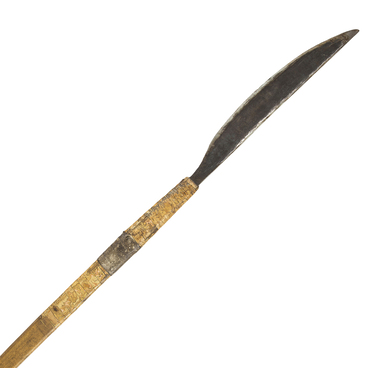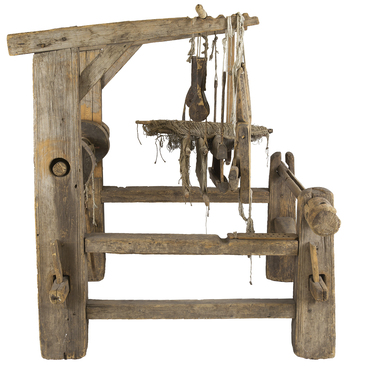The Transbaikal Regional Museum of Local Lore displays a statue of an Evenk dressed in traditional clothing and high fur boots called unty, winter shoes. In his hands he holds a bow and arrows, they were the main attributes of local hunters until the 19th century.
The Evenks used two types of bows: with a simple or a complex design. They were made of wooden plates — spruce, birch, larch, or cedar — which had been harvested and dried for two whole years beforehand. The parts were fastened to each other with fish glue extracted from swim bladders.
The bow of the simpler design was shorter than that of the complex design, about one meter in length. It was made of a curved plate, which was covered with birch bark and sometimes — with hide.
The bow of the complex design had an M-shaped elongated form, while its other elements varied depending on the district. The Yenisey Evenks glued a square or oval birch wedge, called a haran, on the middle of the bow. The Nelkano-Ayansky tribes decorated their bows with baleen on the inner parts.
The Western Evenks covered the outer parts with birch bark, while the inhabitants of Eastern Transbaikal used bird cherry bark. To make the ends more durable, they covered them with animal tendons.
The edges of the bow were pulled by a string, which was called an olin or igin. It was made of hemp fibers, nettles, and strips of hide. The Syktyvkar Evenks sometimes even wrapped a thin layer of birch bark around it.
The arrows differed in their tips, which were made either of metal or bone, and selected depending on the intended purpose. For hunting musk deer, even-toed animals similar to deer, the Evenks used pitchfork-like tips with notches on the inside. They hunted bigger animals with other arrows — they had double or awl-shaped tips. Arrows with wedge-shaped triangular plates of iron were made for hunting sable.
They added fletching on an arrow, which was about 3 centimeters in width and made from the tail feathers of woodpeckers, eagles, and grouse. It helped hunters to shoot farther and more accurately.
In the 18th century, the first Russian explorers of Siberia introduced guns to the Evenks, thus arrows and bows were used less and less.
The Evenks used two types of bows: with a simple or a complex design. They were made of wooden plates — spruce, birch, larch, or cedar — which had been harvested and dried for two whole years beforehand. The parts were fastened to each other with fish glue extracted from swim bladders.
The bow of the simpler design was shorter than that of the complex design, about one meter in length. It was made of a curved plate, which was covered with birch bark and sometimes — with hide.
The bow of the complex design had an M-shaped elongated form, while its other elements varied depending on the district. The Yenisey Evenks glued a square or oval birch wedge, called a haran, on the middle of the bow. The Nelkano-Ayansky tribes decorated their bows with baleen on the inner parts.
The Western Evenks covered the outer parts with birch bark, while the inhabitants of Eastern Transbaikal used bird cherry bark. To make the ends more durable, they covered them with animal tendons.
The edges of the bow were pulled by a string, which was called an olin or igin. It was made of hemp fibers, nettles, and strips of hide. The Syktyvkar Evenks sometimes even wrapped a thin layer of birch bark around it.
The arrows differed in their tips, which were made either of metal or bone, and selected depending on the intended purpose. For hunting musk deer, even-toed animals similar to deer, the Evenks used pitchfork-like tips with notches on the inside. They hunted bigger animals with other arrows — they had double or awl-shaped tips. Arrows with wedge-shaped triangular plates of iron were made for hunting sable.
They added fletching on an arrow, which was about 3 centimeters in width and made from the tail feathers of woodpeckers, eagles, and grouse. It helped hunters to shoot farther and more accurately.
In the 18th century, the first Russian explorers of Siberia introduced guns to the Evenks, thus arrows and bows were used less and less.



